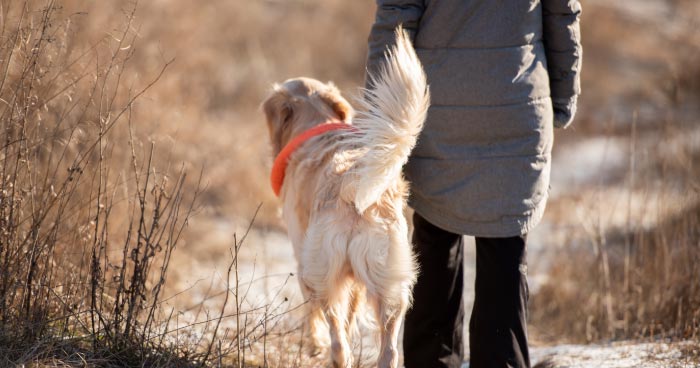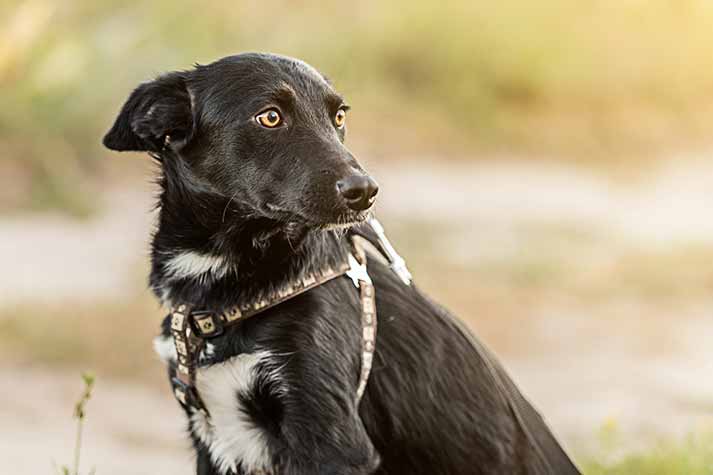
23 Jan
Understanding Canines: How to Read Your Dog’s Body Language
Dogs cannot communicate verbally. Yes, that is stating the obvious, but dogs cannot speak, at least not in the same way humans do. However, that does not mean they don’t communicate. Far from it in fact, dogs communicate through a combination of body language and vocalizations.
Where people speak, dogs will bark, growl, and whine as part of their vocalizations. It is important for every dog owner to be aware of what these sounds mean, as this will help you understand your dog and its needs.
More often than not, a dog communicates through their body language, which can lead to some miscommunication. Since a dog’s body language is a large part of how they communicate, it is best to learn how to read a dog’s body language.
Here’s A Few Tips to Understand Your Dog Better
Wagging Tails

Tail wagging is perhaps the most misinterpreted aspect of dog body language. A lot of people assume that a dog’s waggly tail is a sign of happiness. However, this is not the case, as a wagging tail can mean many things.
A wagging tail simply means a dog is emotionally aroused or charged. This could mean excitement, but it could also mean frustration and impatience, so it is important to consider the speed and direction of the tail when approaching a dog.
In essence, the faster the dog’s tail is wagging, the more emotionally aroused or charged up it is. This is not a positive indicator; a faster and nervy wag of the tail could mean that the dog is alert or on guard, which could lead to trouble if you approach it. On the other hand, a dog with long, low sweeps of the tail is a relaxed dog, and a relaxed dog is an approachable dog.
The last thing to consider with regard to your dog’s tail is how high it is in relation to the floor. The higher the tail is, the more assertive and confident the dog is. The lower the tail, the lower the confidence of the dog.
You may have noticed dogs that are scared often have their tails low or between their legs, giving you an indicator of the dog’s mood. Once you figure out what your dog’s tail looks like in a neutral position, you’ll quickly be able to tell when their emotions have shifted.
Posture

The posture and position of a dog’s body can tell you a lot about their mood. For example, consider a dog that drops for a belly rub. A dog is playful, calm, and relaxed when they roll onto their back, but it can also be a sign of submission and stress.
When a dog is hunched over the ground, it physically tries to appear smaller. This position conveys a lack of threat, where the dog is basically saying, “I’m harmless”. The opposite of this would be a dog with its weight on its front paws with its tail raised high. This position conveys dominance, wherein the dog is trying to act intimidating by making itself bigger than it is.
An easy indicator of your dog’s mood is one you’re probably familiar with, which is the playful bow. This is when your dog stretches, with its head and chest low and tail and rear raised high. This is a gesture of playfulness, and it’s used to start playtime at home or with other dogs.
Expressions

Dogs have facial expressions just like we do, they just don’t use them in the same way. Yawning is an example; while people yawn out of exhaustion or boredom, dogs yawn due to stress as a way to calm themselves down.
Lip-licking is another common dog behavior that’s often misunderstood. While dogs might lick their lips after a tasty meal, they also do it when they’re feeling anxious. Sometimes, this quick gesture is easy to miss; it’s a sign they’re uncomfortable in a certain situation.
Smiling can be even more confusing. Yes, some dogs smile, but if you’re not used to the expression, it might look intimidating. When dogs show their teeth aggressively, it’s typically a warning, as if to say, “Stay away from me.” This snarl is often paired with a growl, with teeth and incisors bared to be on display.
However, a dog’s smile can mean something entirely different. Known as a submissive grin, it’s a sign of friendliness and peace. You’ll notice it on a happy dog with a loose and wiggly body posture. Everything about their demeanor says, “Hi there, I come in peace!”
While interacting with a dog, remember that none of these signals or signs of mood work on their own. Therefore, you should evaluate a dog from face to tail to understand its mood. If you recognize, understand, and respect your dog’s mood and body language, you will strengthen your bond and develop trust in the long run, not to mention resolve behavioral issues before they get too serious.






AUTHOR’S BIO
Carry My Pet
Passionate pet enthusiasts and globetrotters, dedicated to easing furry friends' journeys worldwide. Penning tales of compassion at CarryMyPet, where every relocation is a tail-wagging adventure.